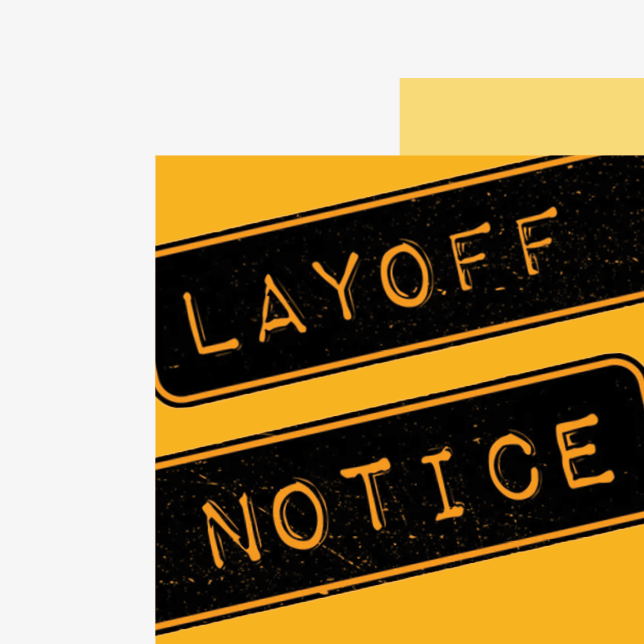According to Gartner, a staggering “91% of HR Leaders are concerned about employee turnover in the immediate future.” With recent changes to the labor market — we’re looking at you Covid-19 and The Great Resignation — this statistic isn’t surprising.
What’s more surprising is that employee retention isn’t as tough to improve as you might think. In fact,Workforce Institute’s 2021 Retention Report revealed that up to two-thirds of departures may have been preventable.
Toward a more precise definition of employee turnover
Simply put, employee turnover is the number of employees replaced with new ones, usually represented by a percentage. If you have 100 employees, and you lost and replaced a total of 35 people last year, your employee turnover rate was 35%.
Still, that’s not the whole picture. To really understand employee turnover, you also need to understand employee attrition and, by extension, employee churn.
Employee attrition is like employee turnover, except the employees you lose aren’t replaced. Maybe you decided to outsource delivery instead of employing your own drivers, for example. Attrition reduces your total number of employees.
Employee churn combines the two: attrition plus turnover. It can get confusing since the terms are often used interchangeably, but the important thing is to understand what employee turnover means for your company.
Is employee turnover good, bad, or just plain ugly?
There’s a reason companies try to improve employee retention, putting millions of dollars and thousands of hours into retention strategies. Usually, a high turnover rate indicates a significant problem.
For one thing, replacing team members is costly. The time and resources it takes to recruit, hire and train a high-performing employee are significant. According to Gallup, “The cost of replacing an individual employee can range from one-half to two times the employee’s annual salary — and that’s a conservative estimate.”
To make matters worse, it’s no secret that the labor market has become extremely competitive in recent years, further driving up the cost of employee turnover in replacing top talent. But money isn’t the only issue when an employee leaves. Consider the disruption to a team’s workflow, for example — not to mention morale if that team was working well together.
There’s also company culture to think about, which is largely established and perpetuated by long-standing employees. If your staff turnover is too high, your workplace culture can suffer.
All that being said, employee turnover can have some potential silver linings. Separations due to poor performance can be a boon, both to costs and culture.
While replacing a poor-performing employee has upfront costs, the increase in productivity will benefit the company in the long run. Just as losing a good team member is disruptive, the reverse is true of losing a bad fit. Replacing a problematic employee improves culture by improving your other employees’ experience.
Defining the metric: a formula for calculating employee turnover
Here are the essential steps for calculating employee turnover:
- Count the total number of employee separations over a given time period
- Divide the number by the average number of employees you had during that time
- Multiply by 100 to express the rate as a percentage
Technically, that will give you the rate of employee churn. If you specifically want the rate of employee turnover, count only the employees you replaced last year instead of the total separations.
The average number of employees doesn’t include independent contractors or temporary agency workers. It does however include employees who were temporarily laid off or on a leave of absence, as well as temporary workers on the company payroll.
This formula can be used to calculate a monthly turnover rate, a year-to-date (YTD) turnover rate, an annual turnover rate, or any time period you want to measure.
Industry benchmarks for employee turnover rate
Calling a specific employee turnover rate good or bad would be an oversimplification. What constitutes a good employee turnover rate is largely dependent on your industry as well as your specific business model.
The U.S. Bureau of Labor Statistics reported the annual national average separation rates in 2021 as 47.2%, but that isn’t a one-size-fits-all template. That average is brought up by industries with extremely high employee turnover.
Thankfully, the BLS also gives us industry averages to use as benchmarks. Among the highest are Accommodation and Food Services at 86.3% and Leisure and Hospitality at 84.8%. The lowest rates include the Federal Government at 18.8% and Government State and Local Education at 16%.
The average turnover rates have changed in recent years. In 2019, the national rate was 45.1%. Then in 2020, there was a spike, jumping to 56.8% before receding to 47.2% in 2021. What this tells us is that turnover rates are also affected by factors outside of our control, and will naturally vary.
Analyzing workforce turnover: identifying the main causes
People leave their jobs for various reasons , from simple personal issues to dissatisfaction with a toxic work environment. The first step in identifying the specific challenges your company faces is to distinguish between voluntary turnover and involuntary turnover.
A high rate of voluntary separation could indicate management problems that need to be addressed. A high rate of involuntary separation could be a good thing as the company lets go of actively disengaged employees, but be aware that disengagement can also be caused by managerial issues. Before you decide that involuntary turnover isn’t a problem, try to dig deeper to uncover its root causes.
Here are the top reasons why employees look for work elsewhere.
The causes of high voluntary turnover rates
1. Poor work-life balance
Work-life balance is the delicate equilibrium between any person’s work life and personal life. It’s an important factor in employee satisfaction. When work encroaches too much into employees’ personal lives it results in stress, frustration, and loss of work performance. Things like working too many hours, working under tight deadlines for a long period of time, and frequently contracting employees while they’re not at work are some typical elements of poor work-life balance.
2. Employee burnout
Employee burnout tends to leave people drained, low on patience, and disengaged from their work. Burnout can be caused by things like a poor work-life balance, too much responsibility, unchallenging work, and career stagnation. Burnout often results in absenteeism or quiet quitting.
3. Better employment alternatives
With the competitive labor market, top performers have a plethora of new job options to choose from. What makes another option better depends on the employee, which is why it’s imperative to understand employees as individuals and explore the things they value.
4. Career development & professional development opportunities
The Great Resignation and the competitive labor market have also resulted in many employees prioritizing their career path by seeking jobs with ample opportunities for career growth. Employees no longer feel like they have to stay in a “dead-end” job for the sake of job stability. Along the same lines, employees also hate to feel stagnation in their professional skills and may seek other employment if there’s a better opportunity for professional development.
5. Inadequate attention to employee well-being
Employee well-being is another cornerstone of the employee experience. It refers to the physical, mental and economic well-being of an employee. Things like work environment, interpersonal conflict, and job stability are all factors.
6. Non-competitive compensation & benefits
While today’s employees are more willing to change jobs for non-monetary reasons, they still care about compensation and benefits too, especially when it comes to a fair wage and equal treatment. Employee benefits like expanded paid time off, flexible hours, and remote or hybrid work arrangements are also becoming more and more commonplace for new employees.
7. Poor management
Despite their best efforts, poor leadership and bad working relationships with management continue to plague many organizations. Things like micromanaging and lack of meaningful guidance are still among the leading reasons people leave their jobs. Lack of role clarity and expectations also factor in, especially when employees are asked to do more and more over time without compensation or promotion.
8. Lack of purpose
A sense of purpose is an integral part of employee engagement. Do your employees believe in the company’s mission? Do their values align with the organization’s stated objectives? That elusive sense of purpose can be a tough thing to provide mid-stream. It’s often better to find out if a new employee is aligned with your company’s ideals during the hiring process. Still, there are several employee engagement ideas that HR teams can do to increase engagement throughout the organization.
The causes of high involuntary turnover rates
1. Poor performance
Poor performance is likely the most common reason for involuntary separations. There could be any number of factors that lead to poor performance, not all of which are within your capacity to fix. While cutting ties with a poorly performing employee can lead to a better work environment and more productivity for those who remain, exit surveys may provide eye-opening insights into what really went wrong.
2. Structural reorganization and workforce reductions
When businesses are struggling, they may try to reduce payroll costs through strategic attrition, layoffs, or structural reorganization. Outsourcing also tends to shift jobs from one company to another. In those circumstances, human resources departments may want to focus on employee turnover, not churn, so the numbers won’t be skewed by strategic pivots.
3. Changing business needs
Industries are constantly evolving, as is the technology that serves those industries. Changes in economic climate, operations, and technology can lead to an employee’s role becoming obsolete. Whenever possible, HR teams should look into the possibility of retraining existing employees for new roles, especially if it means retaining a loyal, engaged workforce.
Addressing the problem: toward improving employee retention
As simple as it sounds, here are 4 critical steps you can take to reduce employee turnover.
1. Refine your hiring process and onboarding
Being proactive during the hiring and onboarding processes can ensure new hires are good fits for the organization, receive the training they need, and understand the expectations of their new work environment.
2. Prioritize recognition
Turn employee recognition into a strategic effort. The employees who feel valued and appreciated are less likely to leave — and far more likely to leave positive ratings on job sites like Glassdoor, referring friends and family to open positions.
3. Keep employees engaged
Employees want to feel engaged and fulfilled at work just as much as you want to help them feel that way. Employee engagement is a true win-win, leading to better productivity for employers and a greater sense of fulfillment for employees. The good news, there are techniques to motivate disengaged employees.
4. Gather employee feedback
Collecting employee feedback through surveys, check-ins, and exit interviews provides invaluable insight into employee turnover.
How a smart intranet platform can help
From identifying the causes of employee turnover toimplementing strategic EX initiatives, Simpplr’s Live EX™️, the first real-time employee experience platform, is revolutionizing the way HR teams work:
- Offer streamlined onboarding flows for every new hire
- Identify influential leaders at every level of the organization
- Know in real-time how employees feel about new initiatives
- See engagement easily with built-in heat maps
- Conduct employee surveys in a platform they’ll actually want to use
To learn more about cutting-edge solutions for HR teams in reducing turnover, improving retention, and impacting the bottom line, explore our HR industry report:State of Internal Communications 2022.

















